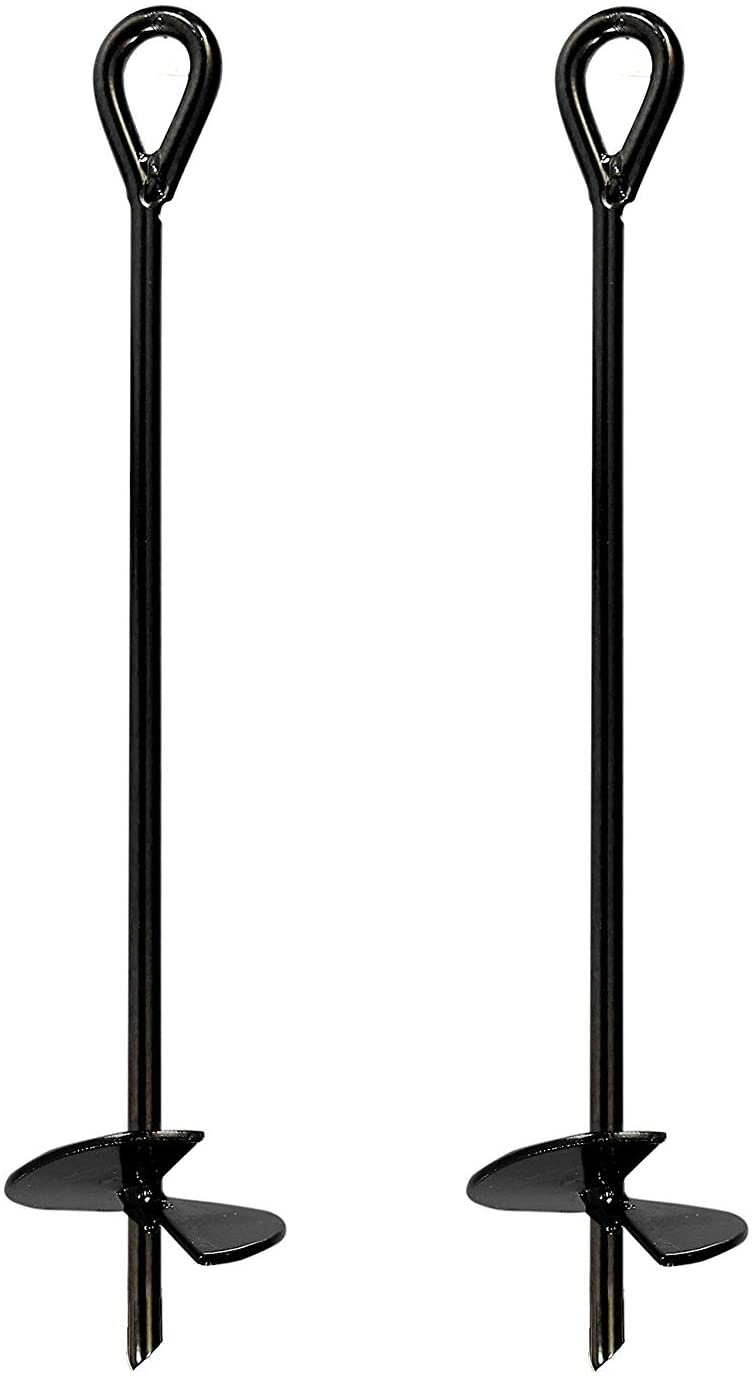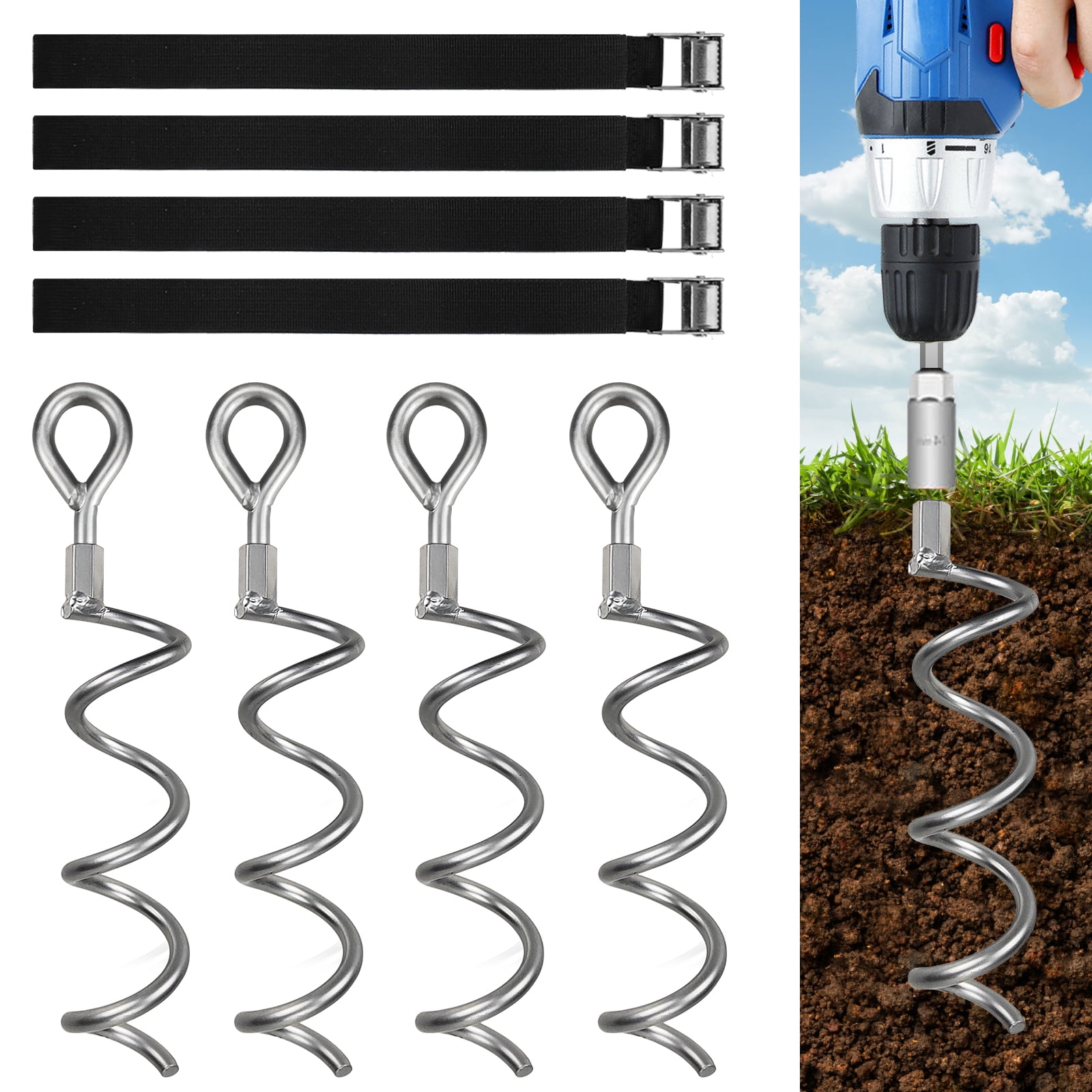Discover the Different Types of Ground Anchor for Your Following Job
From auger anchors, which stand out in diverse soil problems, to stake anchors designed for short-term installments, the options are many. Additionally, concrete and screw supports present distinct benefits in details situations, while deadman anchors are customized for applications calling for resistance to side pressures.

Auger Anchors
Auger supports are a prominent option in different building and landscape design jobs as a result of their unique layout and efficient securing abilities. These supports include a helical screw-like shaft that is driven into the ground, enabling a protected and secure hold. The spiral design assists in easy setup and makes the most of resistance against lateral forces, making auger anchors especially reliable in applications such as fencing, short-term structures, and disintegration control.
The installment process of auger anchors is relatively uncomplicated. They can be by hand or mechanically mounted, relying on the size and required deepness. This flexibility permits their usage in diverse dirt conditions, from sandy to clayey terrains. Auger anchors can be quickly removed and reused, which adds to their cost-effectiveness and sustainability.
Among the considerable benefits of auger supports is their capability to distribute tons evenly throughout the bordering soil, lowering the threat of soil disruption and decreasing environmental influence. Additionally, they are less vulnerable to heaving or loosening with time contrasted to standard securing methods. Auger supports are an excellent choice for tasks requiring reputable and durable anchoring remedies.

Risk Anchors
When it involves safeguarding structures in a variety of outside applications, stake anchors offer a trustworthy and uncomplicated service. These anchors are usually constructed from durable materials such as steel or aluminum, developed to hold up against environmental stress and anxieties while providing ideal security. Their simple design permits for quick installation, making them an ideal choice for short-lived or permanent anchoring needs.
Risk supports are particularly useful in protecting camping tents, canopies, and various other light-weight frameworks against wind and climate. They operate by being driven into the ground at an angle, developing a solid hold that withstands pull-out forces - Ground Anchor. The efficiency of stake supports depends on several variables, including soil type, wetness content, and the angle of installment
For included safety, numerous stake supports come with add-on factors for bands or ropes, enabling for tension modifications as necessary. In applications such as landscaping or construction, they can properly maintain equipment or structures on unequal terrain. In general, risk supports offer a flexible and affordable service for protecting numerous exterior installations, making them a recommended choice for contractors and do it yourself fanatics alike.
Concrete Anchors
Concrete supports supply a robust service for protecting frameworks to concrete surface areas, making certain security and safety and security in various applications. These supports are essential for projects varying from residential buildings to large industrial installations. They are available in different kinds, including development supports, sticky supports, and undercut supports, each made for specific lots demands and environmental conditions.
When set up,Growth supports rely on mechanical systems to grip the concrete. They are suitable for tool to sturdy applications. Sticky anchors make use of high-strength epoxy or resin to bond the anchor to the concrete, supplying premium load-bearing abilities, particularly in fractured concrete scenarios. Undercut supports produce an unique shape within the concrete, giving outstanding holding power, especially in applications where tensile tons are prevalent.
Selecting the ideal concrete anchor includes taking into consideration elements such as the weight of the Click Here tons, the condition of the concrete, and environmental conditions. Proper setup methods are critical to make certain optimum efficiency and integrity. When implemented appropriately, concrete anchors considerably enhance the structural integrity of numerous jobs, making them essential in contemporary building practices. Recognizing the specific needs of your project will certainly assist in picking the appropriate sort of concrete anchor for the task.
Screw Anchors

Screw supports are a functional fastening service that can be successfully employed in a variety of applications where typical concrete supports might not be enough. These anchors include a helical design that permits them to be quickly driven into the ground, making them ideal for usage in dirt and other substratums. Their unique structure supplies exceptional holding power and resistance to pull-out pressures, making them appropriate for various jobs, from landscape design to structural support.
One of the primary benefits of screw anchors is their convenience of installment. They call for marginal tools and can commonly be mounted without the requirement for excavation, which saves both time and labor costs. In addition, screw supports can be eliminated and recycled, offering a sustainable option for short-lived applications.
Screw anchors are especially helpful in areas where dirt conditions are challenging, such as sandy or loosened soils. Their ability to be set up at differing depths permits modification based on certain project needs. In general, screw anchors provide a trusted and effective anchoring method, making them an exceptional selection for professionals and engineers looking for effective options for their jobs.
Deadman Anchors
Deadman supports function as a robust service for maintaining frameworks in challenging conditions, particularly where conventional securing approaches may fail. These anchors include huge, heavy objects buried underground, which create resistance versus side forces. The design generally entails a straight part, such as a block of concrete or a metal plate, buried in Read More Here the dirt, to which straps or cables are affixed.
The effectiveness of deadman anchors depends on their official website ability to distribute loads over a larger area, reducing the risk of failure in unsteady dirt problems. They are specifically advantageous in applications such as retaining walls, temporary structures, and slope stabilization, where dirt movement can jeopardize the honesty of the structure.
Setup of deadman anchors calls for cautious preparation to guarantee they are put at the correct deepness and alignment, optimizing their load-bearing capacity. While they might need even more labor and product than light-weight supports, their integrity in adverse problems makes them vital for long-lasting jobs. In addition, deadman supports are functional and can be adjusted to numerous applications, making them a best choice for engineers dealing with one-of-a-kind obstacles in their jobs.
Final Thought
Auger anchors succeed in diverse soil conditions, while risk anchors match short-lived applications. For concrete surfaces, growth and sticky supports supply trustworthy alternatives, and screw anchors supply flexibility in difficult terrains.
Furthermore, concrete and screw supports existing unique benefits in details scenarios, while deadman anchors are tailored for applications needing resistance to lateral pressures - Ground Anchor.Auger anchors are a popular selection in numerous building and construction and landscape design projects due to their unique layout and reliable securing abilities. They come in various kinds, consisting of development anchors, adhesive supports, and undercut supports, each created for certain lots needs and environmental conditions
Sticky supports use high-strength epoxy or material to bond the support to the concrete, using premium load-bearing capabilities, especially in fractured concrete situations. On the whole, screw supports provide a trustworthy and reliable securing approach, making them a superb choice for engineers and specialists seeking reliable services for their tasks.
Comments on “Must-Have Qualities to Check When Buying a High-Quality Ground Anchor”